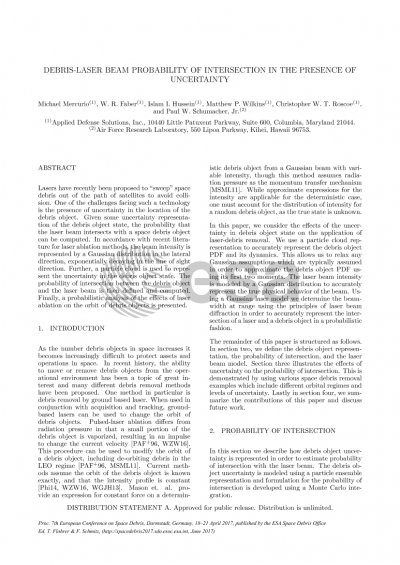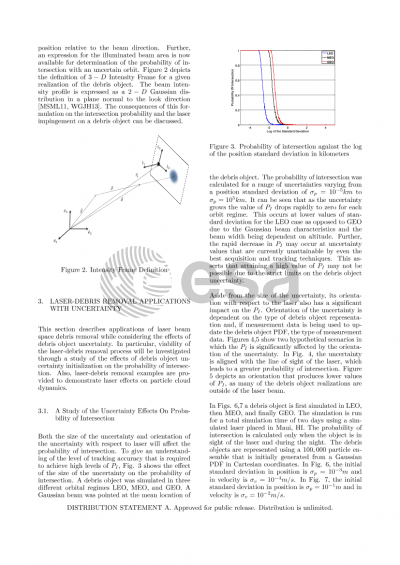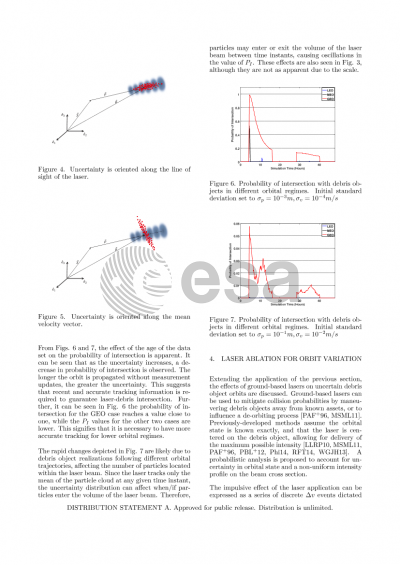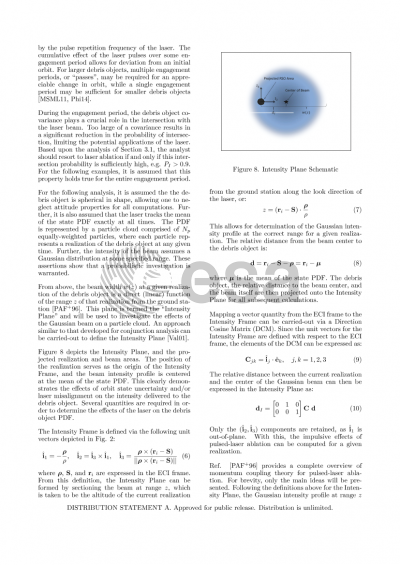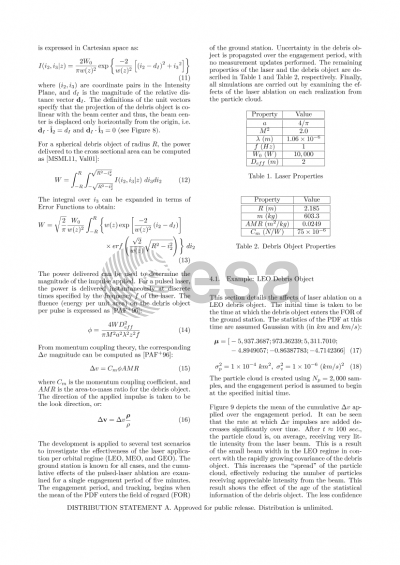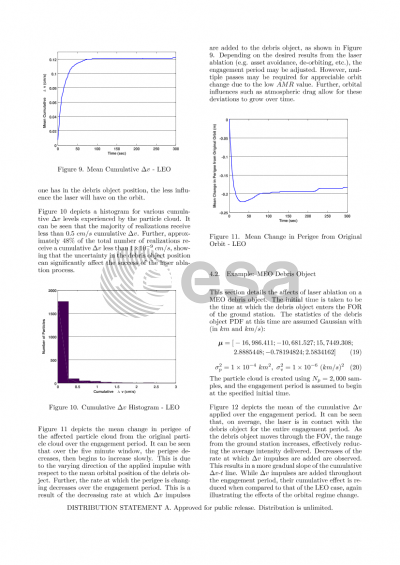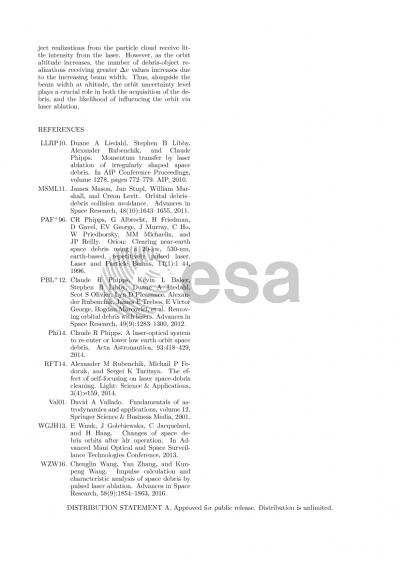Document details

Abstract
Lasers have recently been proposed to “sweep” space debris out of the path of satellites to avoid collision. One of the challenges facing such a technology is the presence of uncertainty in the location of the debris object. Given some representation of the debris object uncertainty, in this paper we compute the probability that the laser beam intersects with the object when pointed towards it, as well as any other object potentially in the path of the beam. We will follow the laser beam models described in [1]. In this paper, the beam intensity will be represented as a Gaussian distribution in the lateral direction and exponentially decaying in the line of sight direction. For object uncertainty, we implement two representations. The first is a Gaussian Mixture Model (GMM) representation and the second is a particle cloud representation. The probability of intersection is defined as the expected value of the beam function taken over all possible debris object locations. In other words, the probability of intersection is the integral of the probability density function of the object times the laser beam intensity distribution. The probability of intersection cannot be computed in closed form and Monte Carlo (MC) based integral computation approach will be used. For both the GMM and the particle representation of uncertainty, we will compute the probability of intersection for several orbital scenarios as well as several object types including, in particular, objects with High-Area-to-Mass-Ratio (HAMR objects). Several beam parameters, such as intensity, will also be explored in the analysis.
This work builds on past work done by the authors on uncertainty representation, quantification and analysis. Applications included the computation of the probability of admissibility of an uncertain object’s orbit within a constrained admissible region [2]. This analysis required the propagation of uncertainty of an object and computation of its likelihood that it exists inside a given region in space. In Refs. [3], the authors used information theoretic measures, specifically the Bhattacharyya divergence, to determine whether two tracks observed at two different times are probabilistically the same object. This can help in solving the uncorrelated track problem. In Ref. [4], the authors used mutual information to correlate collected observations and, out of correlated observations, produce an uncertain initial orbit for the track that generated the observations. Also, relevant to this effort is the computation of probabilistic representation of the region in space in which an object that generated an angles-only observation exists [5]. Such a representation of uncertainty in space, called the Probabilistic Admissible Region (PAR), can then be used to represent the uncertainty in an object’s location. This can be used, in the present paper, to probabilistically assess whether the laser beam designated for a specific debris object for removal may hit an uncorrelated object in space.
In all the above-mentioned research, the analysis involved either a GMM or a particle, or both, representation of uncertainty. In this paper, we pursue both representations and we will compare the performance of both. It is anticipated that while the GMM based approach, combined with an unscented transform for uncertainty propagation, will be faster to compute than the particle approach, but the latter will produce more accurate probability of intersection assessment. The computations will all be performed on both a standard multi-core desktop machine as well as on the Maui High Performance Computing Center in Hawaii.
References:
[1] P. Shriver, S. Gay, T. Gustafson, C. Cogburn, and S. Bump., “Probabilistic Risk Analysis Methodology on Inadvertent Laser Illumination of Satellite Optical Systems,” AIAA Journal of Spacecraft and Rockets, vol. 51, no. 6, 1994-2007.
[2] I. I. Hussein, C. W. T. Roscoe, M. P. Wilkins, and P. W. Schumacher, Jr.,"Probabilistic Admissibility in Angles-Only Initial Orbit Determination, International Symposium on Space Flight Dynamics, Laurel, MD, May 5–9 2014.
[3] I. I. Hussein, C. W. T. Roscoe, P. W. Schumacher, Jr., and M. P. Wilkins, “UCT Correlation using the Bhattacharyya Divergence”, Proceedings of the 26th AAS/AIAA Space Flight Mechanics Meeting, Napa, CA, February 14–18 2016.
[4] I. I. Hussein, M. P. Wilkins, C. W. T. Roscoe, and P. W. Schumacher, Jr. “On Mutual Information for Observation-to-Observation Association,” 25th AAS/AIAA Space Flight Mechanics Meeting, Williamsburg, VA, January 11–15 2015.
[5] C. W. T. Roscoe, I. I. Hussein, M. P. Wilkins, and P. W. Schumacher, Jr. “The Probabilistic Admissible Region with Additional Constraints,” AAS/AIAA Astrodynamics Specialist Conference, Vail, CO, August 9–13 2015.
Preview
